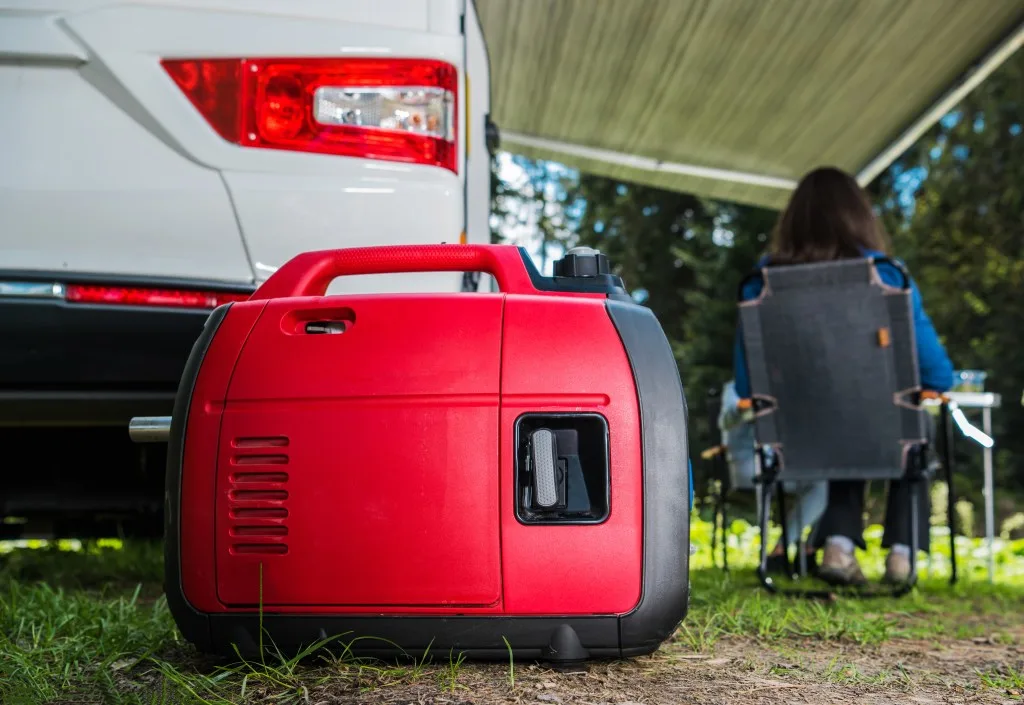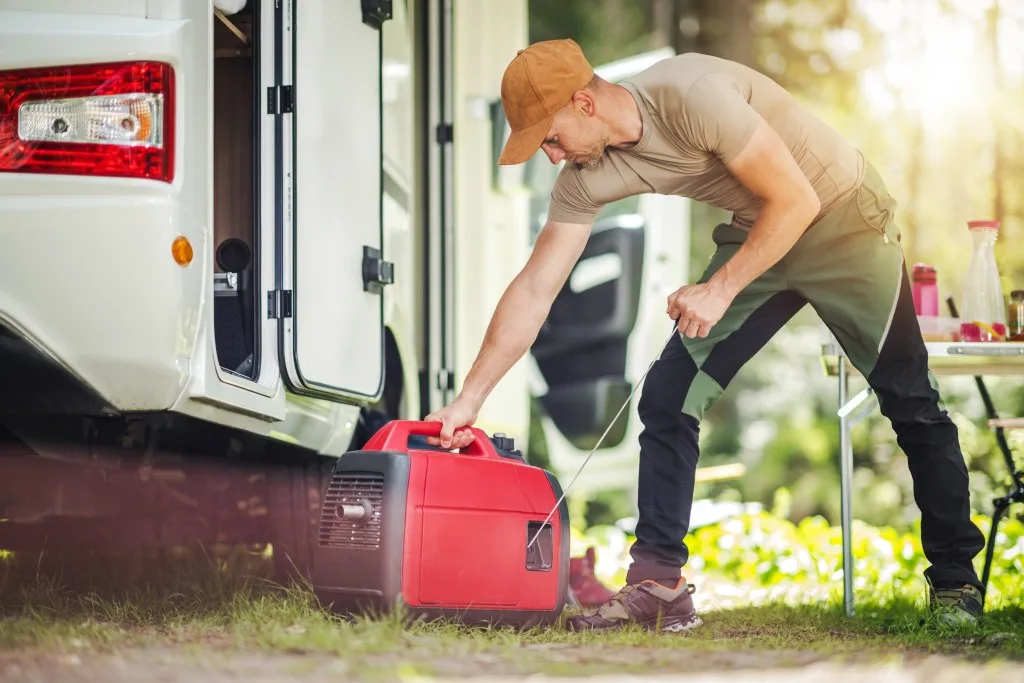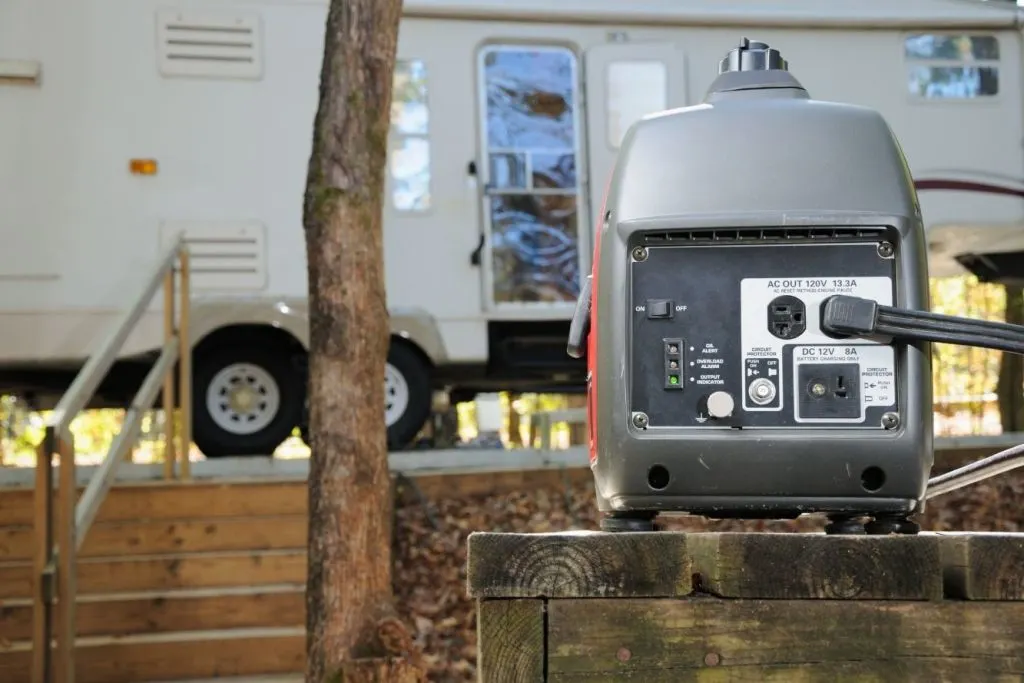If the deafening buzz makes you crazy, a generator box might be exactly what you need.
These crates reduce unwanted noise and protect your generator from rain, extreme temperatures, and even theft. But they can also cost a small fortune.
Today, we’re looking into generator boxes to see if they’re worth the cost. We’ll also explore how to make one yourself.
Let’s get into it!
What are Generator Boxes For?
Generator boxes, also called baffle boxes, help dull the sound of a noisy generator. They also protect your generator from the elements. These enclosures have proper ventilation to allow harmful fumes to escape. Some even have built-in fans to control temperature and assist with airflow.
These enclosures also keep your generator safe from theft. Many include lockable hatches, so you’ll know your investment is secure.
You can purchase a generator box or make your own. Manufactured ones can typically withstand severe weather and live outside indefinitely.
Can You Run a Generator in a Box?
Generators produce lots of heat and emit harmful exhaust. Without proper airflow, your safety and your equipment are both at risk.
But running a generator inside a baffle box with sufficient breathing room is perfectly safe. Soundproofing with two holes allows for air intake and exhaust.
Manufactured generator boxes should always include ventilation. Those without vents can only be used for storage.
Pro Tip: Before you go camping, make sure you know these 7 Things to Know About Camping Generators.

How Much Ventilation Does a Generator Box Need?
To run your generator inside a protective box, you need to ensure it provides sufficient airflow.
Without proper ventilation, your generator could overheat and catch fire. At the very least, it could destroy your engine.
It’s crucial to ensure your baffle box has vents for fresh air intake and to release heat and fumes. Exhaust fans are helpful for temperature regulation, but they’re not required.
Can My Generator Run in the Rain?
Unprotected generators should never be run in the rain. After all, water and electricity are a dangerous combination.
Aside from the risk of electric shock, water can damage the internal components of your generator, make its way into fuel lines, and ultimately destroy the engine.
Wooden covers won’t protect your generator from rain, but with a metal container, you can safely run one in any weather. This is one reason RVers love baffle boxes. Not only can you store your generator on the back of your rig, but you can also use it no matter the weather.
How Much Does a Generator Box Cost?
All that convenience comes with a cost. You might find a cheap generator box for $150, but you could easily spend thousands of dollars if you want a high-quality product that will last for years.
Buying a high-quality generator box may be your best bet if you want a weatherproof design that can withstand the elements for years.
But if soundproofing is your primary goal, you can easily make your own for a much better price.

How to Build Your Own Generator Box
Making a soundproofing box is relatively easy and can save you a ton of money! We’ve outlined the steps below, so you can make one yourself.
Gather Your Tools and Materials
You’ll use medium-density fiberboard for this box’s structure. Mass-loaded vinyl and acoustic foam absorb all that unwanted noise.
You’ll also need a hammer, nails, screwdriver, and screws to assemble. Add measuring tape, a right-angle ruler, glue, acoustic caulk, and ventilation ducts.
Take Your Measurements
As with most DIY projects, you’ll want to start by taking measurements. First, measure your generator. Then take the thickness of your insulating materials into account. In general, you’ll want to add about five inches around all sides.
It might be helpful to sketch out a rough draft before you start your project. This should give you a good idea of all the pieces you’ll need. And remember, it’s never a bad idea to measure twice before you start cutting.
Make the Cuts
Now that everything’s measured, mark all your fiberboard, so it’s easy to see where you need to cut. Use a right-angle ruler to make sure your lines are straight.
Use a circular or a table saw to cut your fiberboard. You can use a standard utility knife to trim the acoustic materials.

Don’t Forget Ventilation Holes
Generator boxes need two ventilation holes. One should be on the side and the other on the top. But make sure the hole on top is far to the side opposite the side hole for optimal airflow.
You can leave these holes open or purchase covers that will help filter out debris. If you want to use vent covers, be sure to measure them before you start cutting.
Install Soundproof Materials
Next, glue the vinyl to the inside faces of your fiberboard. Once dry, inspect each piece to ensure it’s fully affixed. You can add a second layer to block even more sound, but you don’t have to.
Next, glue the acoustic foam to the vinyl. Remember to cut your ventilation holes in these materials.
Assemble Generator Box
Once all the glue is dry, it’s time to assemble your generator box! You can use nails or screws to keep the pieces in place. With an extra set of hands, it may be easier to hold the pieces in place while you secure them.
Attach hinges if you plan on including a door. And go back over all the inner joints with acoustic caulk.
Pro Tip: We uncovered which Camping Generators Are Decent, Better & The Best to help you pick which one is right for you.
Is a Generator Box Worth It?
If the noise keeps you up at night or otherwise drives you crazy, it’s worth the time and effort. Generator boxes are great for minimizing unwanted noise. A metal bin can even protect it from the elements.
Even better, you don’t have to break the bank to get one. You can make your own in a few easy steps for a fraction of the price.
We’ll Help You Find the Best Free Camping in the USA
You should give it a try!
As a matter of fact, these free campsites are yours to enjoy. Every time you pay federal taxes, you’re contributing to these lands.
Become a FREE CAMPING INSIDER and join the 100,000 campers who love to score the best site!
We’ll send you the 50 Best Free Campsites in the USA (one per state). Access the list by submitting your email below: